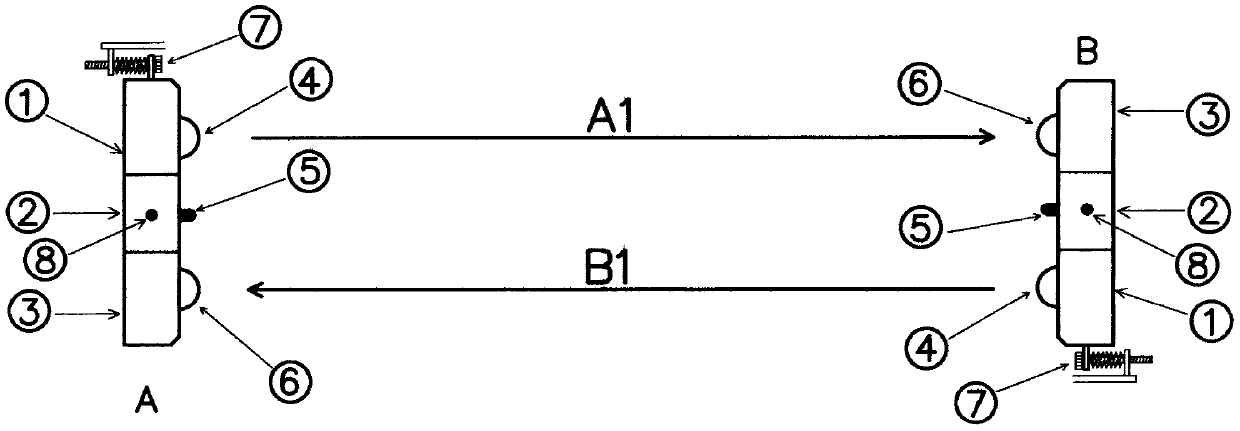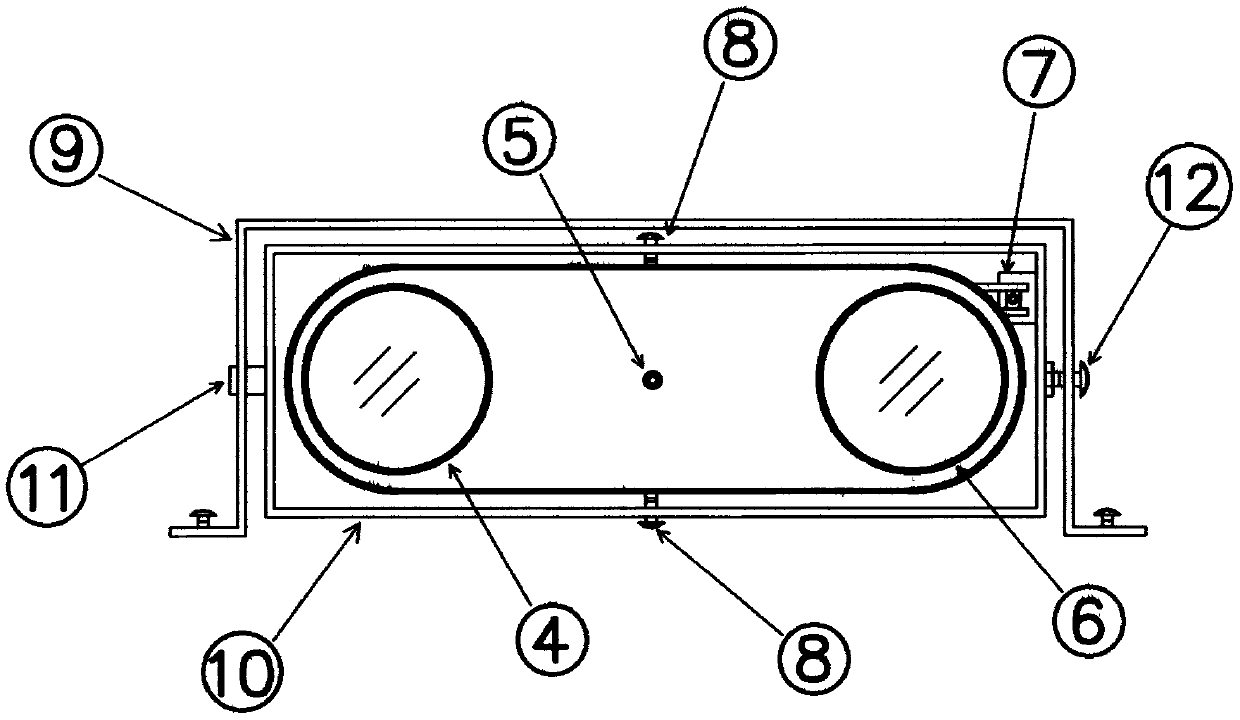Symmetrical transmitting-receiving integrated infrared thru-beam sensor
A technology of on-beam sensor and infrared on-beam, applied in the direction of optical device exploration, etc., can solve the problems of unfavorable occlusion, accurate calculation of occlusion time, transmitter consumption, large current, etc., to ensure effective distance and anti-interference ability, facilitate production and Effects of installation and debugging and reduction of power consumption
- Summary
- Abstract
- Description
- Claims
- Application Information
AI Technical Summary
Problems solved by technology
Method used
Image
Examples
example
[0012] Example: The receiving and converging lenses ⑥ and ④ of the through-beam sensor are located on the same plane, the main optical axes are parallel, the infrared emitting element and the receiving element are located at the focal point of the lens, the A-side through-beam sensor and the B-side through-beam sensor are installed opposite each other, and the axis of rotation ⑧ Rotate the angle, adjust the inclination angle of the up, down, left and right directions, so that the main optical axes of the A-side transmitting lens and the B-side receiving lens are as close as possible, and the main optical axes of the A-side receiving lens and the B-side transmitting lens are as close as possible. After any side is powered on, it enters the receiving cycle first. If no pulse is received within 3 seconds, the transmitting cycle starts. A pulse is transmitted every T1 time, and 8 pulses form a group. The receiving cycle starts counting from receiving the pulse. If 8 pulses with a p...
PUM
 Login to View More
Login to View More Abstract
Description
Claims
Application Information
 Login to View More
Login to View More - Generate Ideas
- Intellectual Property
- Life Sciences
- Materials
- Tech Scout
- Unparalleled Data Quality
- Higher Quality Content
- 60% Fewer Hallucinations
Browse by: Latest US Patents, China's latest patents, Technical Efficacy Thesaurus, Application Domain, Technology Topic, Popular Technical Reports.
© 2025 PatSnap. All rights reserved.Legal|Privacy policy|Modern Slavery Act Transparency Statement|Sitemap|About US| Contact US: help@patsnap.com



